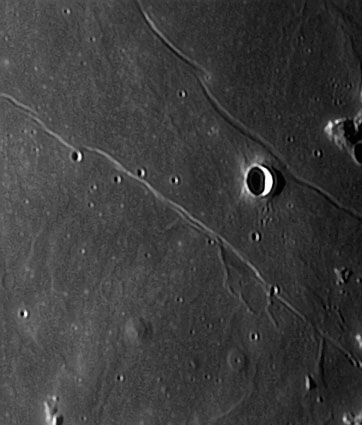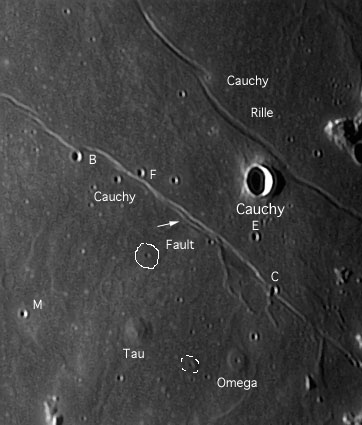Difference between revisions of "September 25, 2004"
| (13 intermediate revisions by the same user not shown) | |||
| Line 1: | Line 1: | ||
__NOTOC__ | __NOTOC__ | ||
=Trough and Pancake= | =Trough and Pancake= | ||
| + | <!-- Start of content --> | ||
<table width="85%" border="0" align="center" cellpadding="6" cellspacing="2"> | <table width="85%" border="0" align="center" cellpadding="6" cellspacing="2"> | ||
<tr> | <tr> | ||
| − | |||
<td width="50%"> | <td width="50%"> | ||
</td> | </td> | ||
| Line 11: | Line 11: | ||
<tr> | <tr> | ||
<td colspan="2" valign="top"><div align="center"> | <td colspan="2" valign="top"><div align="center"> | ||
| − | + | <!-- Mouse style 1 --> | |
| − | + | {{HoverImage|LPOD-2004-09-25.jpeg|LPOD-2004-09-25b.jpeg}} | |
| − | |||
</div></td> | </div></td> | ||
</tr> | </tr> | ||
| Line 19: | Line 18: | ||
<table width="80%" border="0" align="center" cellpadding="8"> | <table width="80%" border="0" align="center" cellpadding="8"> | ||
<tr> | <tr> | ||
| − | <td><div align="center" class="main_sm">Image Credit: [mailto:info@astromeccanica.it Paolo Lazzarotti]</p> | + | <td><div align="center" class="main_sm"><p>Image Credit: [mailto:info@astromeccanica.it Paolo Lazzarotti]</p> |
</div></td> | </div></td> | ||
</tr> | </tr> | ||
| Line 26: | Line 25: | ||
<table class="story" border="0" bgcolor="#FFFFFF" width="90%" cellpadding="10" align="center"><tr><td> | <table class="story" border="0" bgcolor="#FFFFFF" width="90%" cellpadding="10" align="center"><tr><td> | ||
<p align="center"><b>Trough and Pancake</b></p> | <p align="center"><b>Trough and Pancake</b></p> | ||
| − | <p align="left">Here is another wonderful image of the Cauchy fault, rilles, domes and crater, to complement the previous [ | + | <p align="left">Here is another wonderful image of the Cauchy fault, rilles, domes and crater, to complement the previous [[August_14,_2004|low sun view]] of the western end of this interesting area. This very high resolution image is remarkable for being relatively high sun and yet showing beautifully the low relief domes. Cauchy Tau is clearlyl seen to have slightly irregular topography, like a well behaved version of the Arago domes. Tau has been determined to be 149 m high, based on photometry. The surprise is the flattened look of Cauchy Omega. With its perfectly centered pit, Omega had always before looked to me like a typical hemispherical shield, but now we see it is a pancake. Because it is covered by a high resolution lunar contour map (61D2S), Dick Pike was able to determine that Omega is 6.90 km wide and 116 m high, with a summit pit 1.775 km wide and 231 m deep. Enlarging the image reveals that Omega has a rim nearly all the way around its flat top - in fact, it looks like a miniature version of Wargentin. This tiny rim does not show up in the excellent [[January_2,_2004|Apollo 8 oblique view]]. A lower, smaller, and pitted dome is just visible between Omega and Tau (dashed in mouseover) and a classical hemispherical pitted dome (white circle in mouseover) is north of Tau; both of these domes are also visible on the Apollo 8 image. If you want to wildly over-interpret the image you might say that two more possible low domes or mare swells are are between Tau and a hill in the SW corner of the image. No speculation is required to see the delicate rille at the base of the Cauchy Fault. I first observed this in about 1971 with a 16" Cassegrain telescope - it is rarely observed or imaged. Finally, this remarkable image also shows that the Cauchy Rille appears V-shaped at its ends, but has a broad floor in its middle. Actually, the [http://www.lpi.usra.edu/research/lunar_orbiter/images/img/iv_073_h2.jpg Lunar Orbiter IV image] shows the rille to be flat-floored at the ends too, so the V-shape is not real, but an appearance caused by rille's narrowness. Its a pretty standard little trough. |
</p> | </p> | ||
| − | <blockquote><p align="right">— [mailto:tychocrater@yahoo.com Chuck Wood]</blockquote> | + | <blockquote> |
| − | <p align="left" | + | <p align="right">— [mailto:tychocrater@yahoo.com Chuck Wood]</p></blockquote> |
| + | <p align="left"><b>Technical Details:</b><br> | ||
Sept 3, 2004, Planewton DL-232 (9.5") Newtonian, Lumenera LU075M camera + R+IR filters passing only light at 550-1000 nm); 400/4450 frames @1/30 exposure.</p> | Sept 3, 2004, Planewton DL-232 (9.5") Newtonian, Lumenera LU075M camera + R+IR filters passing only light at 550-1000 nm); 400/4450 frames @1/30 exposure.</p> | ||
<p><b>Related Links:</b><br> | <p><b>Related Links:</b><br> | ||
| − | Photometric Studies of Two Domes, A.S. Rifaat, <i>Icarus 7,</i> p. 267-273; 1967. | + | Photometric Studies of Two Domes, A.S. Rifaat, <i>Icarus 7,</i> p. 267-273; 1967.</p> |
| − | <p | + | <p><b>Yesterday's LPOD:</b> [[September 24, 2004|Tranquil Sunshine]] </p> |
| + | <p><b>Tomorrow's LPOD:</b> [[September 26, 2004|Astonishing Megadome]] </p> | ||
</tr> | </tr> | ||
</table> | </table> | ||
| Line 44: | Line 45: | ||
<p align="center" class="main_titles"><b>Author & Editor:</b><br> | <p align="center" class="main_titles"><b>Author & Editor:</b><br> | ||
[mailto:tychocrater@yahoo.com Charles A. Wood]</p> | [mailto:tychocrater@yahoo.com Charles A. Wood]</p> | ||
| − | < | + | <!-- Cleanup of credits --> |
| − | + | <!-- Cleanup of credits --> | |
| − | < | + | <!-- Cleanup of credits --> |
| − | + | <!-- Cleanup of credits --> | |
| − | < | + | <!-- Cleanup of credits --> |
| − | < | + | <!-- Cleanup of credits --> |
| − | + | <!-- Cleanup of credits --> | |
| − | < | + | <!-- Cleanup of credits --> |
| − | + | <!-- Cleanup of credits --> | |
</td></tr> | </td></tr> | ||
</table> | </table> | ||
| − | ---- | + | <!-- End of content --> |
| − | + | {{wiki/ArticleFooter}} | |
| − | |||
Latest revision as of 14:54, 15 March 2015
Trough and Pancake
Image Credit: Paolo Lazzarotti |
|
Trough and Pancake Here is another wonderful image of the Cauchy fault, rilles, domes and crater, to complement the previous low sun view of the western end of this interesting area. This very high resolution image is remarkable for being relatively high sun and yet showing beautifully the low relief domes. Cauchy Tau is clearlyl seen to have slightly irregular topography, like a well behaved version of the Arago domes. Tau has been determined to be 149 m high, based on photometry. The surprise is the flattened look of Cauchy Omega. With its perfectly centered pit, Omega had always before looked to me like a typical hemispherical shield, but now we see it is a pancake. Because it is covered by a high resolution lunar contour map (61D2S), Dick Pike was able to determine that Omega is 6.90 km wide and 116 m high, with a summit pit 1.775 km wide and 231 m deep. Enlarging the image reveals that Omega has a rim nearly all the way around its flat top - in fact, it looks like a miniature version of Wargentin. This tiny rim does not show up in the excellent Apollo 8 oblique view. A lower, smaller, and pitted dome is just visible between Omega and Tau (dashed in mouseover) and a classical hemispherical pitted dome (white circle in mouseover) is north of Tau; both of these domes are also visible on the Apollo 8 image. If you want to wildly over-interpret the image you might say that two more possible low domes or mare swells are are between Tau and a hill in the SW corner of the image. No speculation is required to see the delicate rille at the base of the Cauchy Fault. I first observed this in about 1971 with a 16" Cassegrain telescope - it is rarely observed or imaged. Finally, this remarkable image also shows that the Cauchy Rille appears V-shaped at its ends, but has a broad floor in its middle. Actually, the Lunar Orbiter IV image shows the rille to be flat-floored at the ends too, so the V-shape is not real, but an appearance caused by rille's narrowness. Its a pretty standard little trough. Technical Details: Related Links: Yesterday's LPOD: Tranquil Sunshine Tomorrow's LPOD: Astonishing Megadome |
|
Author & Editor: |
COMMENTS?
Register, Log in, and join in the comments.





